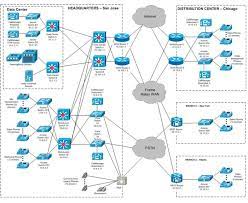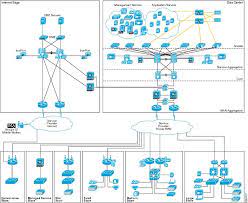
Hacking A Computer Through Ip Address

How a Hacker Might Exploit Your IP Address
A hacker is simply an online vandal, if you think about it. What do vandals do but damage things that don’t belong to them, for no good reason other than to do it. A hacker wants to worm his way into a network of his choosing to do serious (or not-so-serious) damage, such as stealing email addresses or your personal data.
Hacking is mostly focused on causing trouble for big companies and government agencies. But anything is fair game, and that’s why some junior hackers will stoop so low as to hack the IP addresses of our computers, just to mess things up for a bit.
Your network identifier: an IP address.
As you likely know, every computer that is connected to a network or the Internet has its own IP address. Everyone on the Internet has to have an IP address to send emails, look up information or buy online. It’s as simple as this: When you’re connected, you have an actively working IP address. And depending on where you are, your IP address can change.
A lot of Internet chatter that says our IP addresses can reveal our identities is not accurate. As experts have pointed out, if our IP addresses were truly the gateway to all of our personal and private information, then the entire Internet would be one big mess. But fortunately, our IP addresses alone do not make us easy targets.
Unfortunately, that doesn’t mean hackers will leave IP addresses alone. Remember—hackers simply like to mess things up, so they’ll still see what disruption they might be able to cause.
But just how would the hacker get into your computer anyway?
Ports: like doors to your home.
In the world of TCP/IP, the interface between the networks and your programs occurs through a system of electronic channels called ports. Each of these ports has a unique number that identifies it. So, in a sense, the ports are pipelines in the computer through which data can flow to and from a particular application and the network protocol software.
Each IP address has ports associated with it. Those ports are an important part of your computer system: Several programs (applications) might be running on the same computer, and the built-in network software on your computer needs to have a way of knowing what incoming packet of data is intended for what application. It needs to know, for example, how to send incoming emails to your email program.
That’s how that happens.
A building with rooms.
So we have IP addresses, ports and programs. Think of them as an address on your computer, a doorway into a room, and a room itself. With this picture in mind, look at your port as a back door that allows entry into your house…your computer. Completing the analogy, the room is a single application (program) you’re running.
If you’re connected to the Internet and running a program, a related port (identified by a number) will be open. That’s good for you, but it could allow someone who knows your IP address (an outsider, a hacker) access into your connection, with some ability to engage or affect the program you’re running.
Behind the door.
Fortunately, each room/program is somewhat self-contained and doesn’t have connecting doors to the other “rooms” in your computer. So, even if a hacker gets your IP address, sneaks into your port through the big back door and gets into your program, that’s as far as they can go.
Is there a way to block the door? Yes. That’s where a firewall comes into the picture. It essentially blocks intruder activity from getting through the ports.
Making your IP address invisible.
One way to keep hackers at bay is to hide your true IP address. One way to do this is to set up a personal Virtual Private Network (VPN). With a VPN, your online requests are routed through a vast network of computers, and you use a temporary VPN to communicate online. A hacker would not see your true IP address and wouldn’t be able to connect to your computer.
For more information, see our pages on hiding an IP address and Virtual Private Networks.
Related Articles
What is Hacking?
What is Malware?
Building a Better Password

How Hackers Use Your IP Address to Hack … – Business Insider
Your IP (Internet Protocol) address is your unique ID on the internet. It’s synonymous with your home address. Anyone in the world can contact your computer through its
IP address, and send a retrieve information with it.
I’m sure at one time or another you’ve heard that hackers can hack your computer via your IP address. This is one of the reasons proxies and anonymity services exist, to protect people from learning your IP address. So how are hackers using just an address to get into your computer and make your life hell? Open ports. Your computer runs services like media sharing on what are called ports. A port is just an opening that a service uses as a communications endpoint. There are 65, 535 total allocated ports in TCP/UDP. To exploit a service on a port, a hacker would banner grab for the software and version to scour sites like Packet Storm for exploits to run against the ‘s Null Byte is going to demonstrate a simple “port scan” on local computer using Nmap, and teach how a hacker would exploit these services, as well as how to guard ourselves against it. This will be done under Linux, but Nmap is available for all platforms. If you can’t figure out how to install it in Windows with the GUI installer (yeah, right), follow along using 1 Download & Install NmapBold words are commands that must be entered in a terminal emulator.
First, we must download Nmap, which is going to be our tool that we use for port scanning and information gathering: wget, extract the archive: tar -zxvf
Change to the newly made directory: cd This is the standard installation procedure:. /configure
make && sudo make installNmap should now be installed! Step 2 Scan for a TargetLet’s scan a local computer. I’m going to use a website as an example, rather than a local computer. This is because my firewall is absolutely crazy, and filters out scans. Don’t scan a remote computer with the intentions of doing bad deeds. This is for educational purposes by mapping out your local network:
sudo nmap -sP 192. 168. 1. 0/24That should return a list of hosts that are up for a port scan! Step 3 Scan Your Individual TargetOut of the returned list of targets, pick one that you would like to scan for services. Let’s do a full scan of all the TCP/UDP ports: sudo nmap -p 1-65535 -T4 -A -v
You should get something that looks like the following image:As you can see, this target has MANY open ports. SSH piques my interest, so let’s move on to banner grabbing to learn the software version or our choice of 4 Banner GrabbingFor this, you can use the regular ol’ telnet client. Telnet comes with Windows and most Linux distros: telnet
From this, I would learn which software version the service is running, then see if I can find a way to exploit Can I Protect Myself? Luck for all of you lovely people, I recently made a tutorial on iptables, which will filter out unwanted connections. Also, disable any unnecessary programs that connect to the internet (remote administration, media sharing, etc). Windows users, install Comodo firewall, it’s incredible and uses a simple point and click installation, and will filter ports for you. It has great default settings and it is by powtac
Via How Hackers Use Your IP Address to Hack Your Computer & How to Stop It on
Read more posts on WonderHowTo »

How Hackers Use Your IP Address to Hack Your … – Null Byte
Your IP (Internet Protocol) address is your unique ID on the internet. It’s synonymous with your home address. Anyone in the world can contact your computer through its IP address, and send a retrieve information with it. I’m sure at one time or another you’ve heard that hackers can hack your computer via your IP address. This is one of the reasons proxies and anonymity services exist, to protect people from learning your IP address. So how are hackers using just an address to get into your computer and make your life hell? Open ports. Your computer runs services like media sharing on what are called ports. A port is just an opening that a service uses as a communications endpoint. There are 65, 535 total allocated ports in TCP/UDP. To exploit a service on a port, a hacker would banner grab for the software and version. After they learn that information, they would search sites like Packet Storm for known exploits to run against the ‘s Null Byte is going to demonstrate a simple “port scan” on local computer using Nmap, and teach how a hacker would exploit these services, as well as how to guard ourselves against it. This will be done under Linux, but Nmap is available for all platforms. If you can’t figure out how to install it in Windows with the GUI installer (yeah, right), follow along using 1 Download & Install NmapBold words are commands that must be entered in a terminal, we must download Nmap, which is going to be our tool that we use for port scanning and information gathering: wget, extract the archive: tar -zxvf to the newly made directory: cd
How Can I Protect Myself? Luck for all of you lovely people, I recently made a tutorial on iptables, which will filter out unwanted connections. Also, disable any unnecessary programs that connect to the internet (remote administration, media sharing, etc). Windows users, install Comodo firewall, it’s incredible and uses a simple point and click installation, and will filter ports for you. It has great default settings and it is free.
Want to start making money as a white hat hacker? Jump-start your hacking career with our 2020 Premium Ethical Hacking Certification Training Bundle from the new Null Byte Shop and get over 60 hours of training from cybersecurity Now (90% off) >Other worthwhile deals to check out:97% off The Ultimate 2021 White Hat Hacker Certification Bundle 99% off The 2021 All-in-One Data Scientist Mega Bundle 98% off The 2021 Premium Learn To Code Certification Bundle 62% off MindMaster Mind Mapping Software: Perpetual License
Photo by powtac


